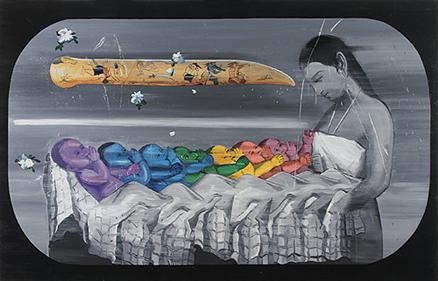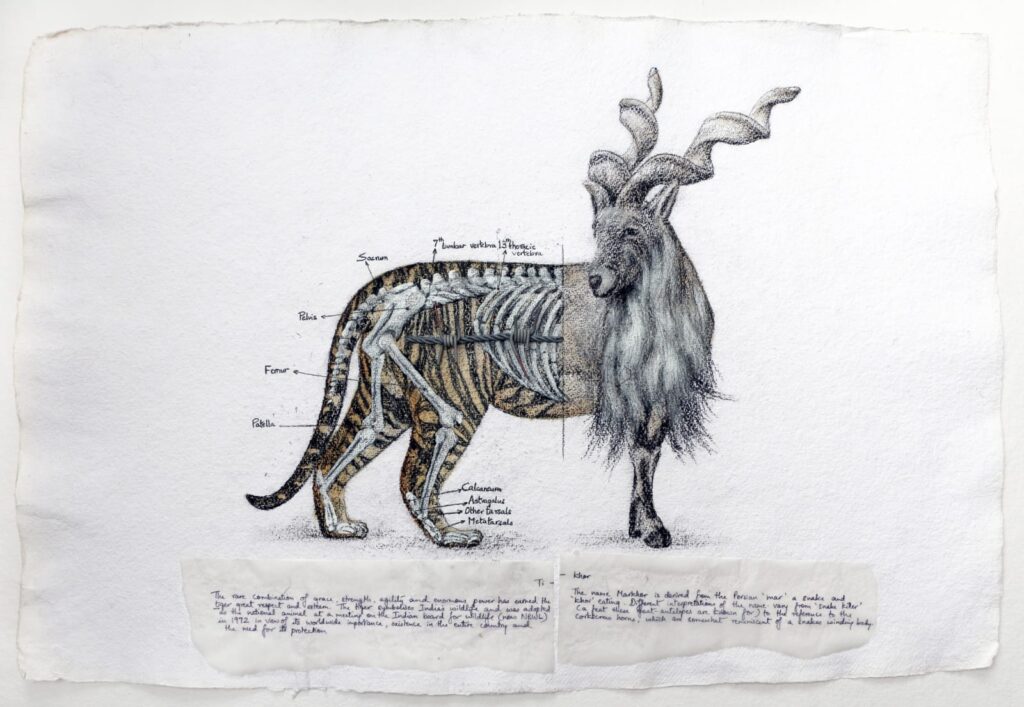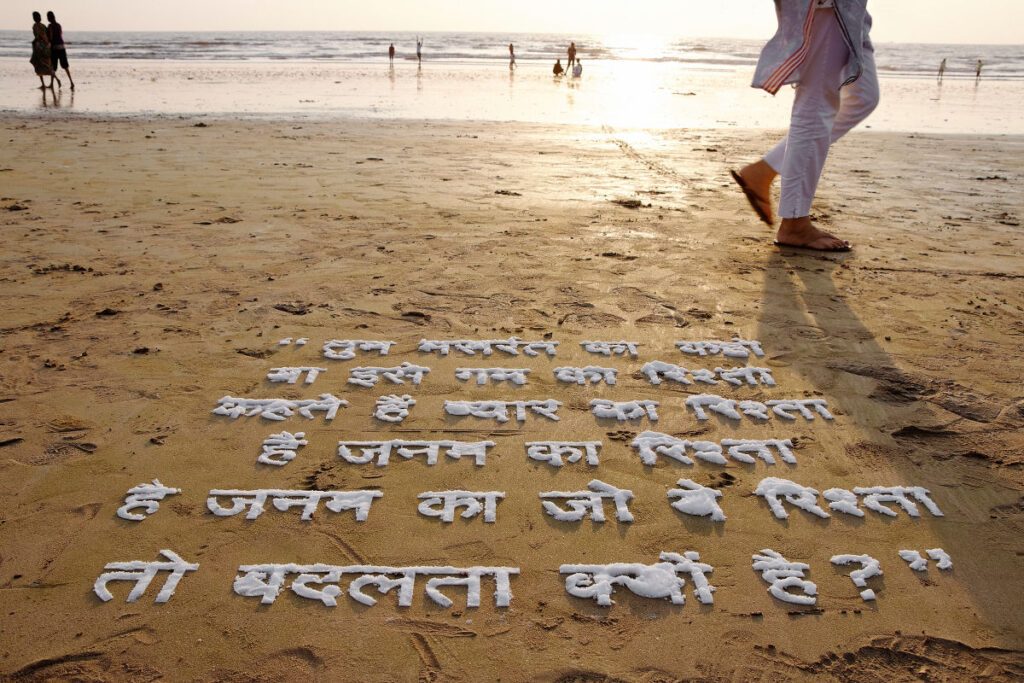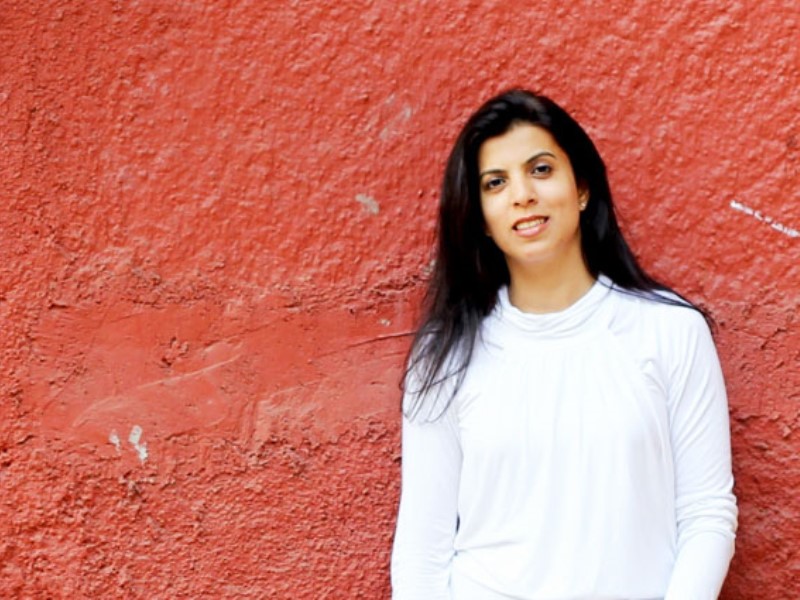Is there any merit in the contemporary world to think of our identities as singularly defined in terms of religion, nationality, or race that distinguishes us from fellow human beings? What potency might the idea of ‘liminality’ or ‘hybridity’ have in describing our relationship with the world? How might an artist respond to this immensely bordered and fenced planet that we inhabit? What kind of challenges does forgetfulness present when it is instituted by the apparatuses of the state itself? Questions of this order animate the work of the contemporary Indian artist Reena Saini Kallat.
About Reena Saini Kallat
Born in 1973 in Delhi, India, Reena Saini Kallat graduated from the Sir J. J. School of Art in 1996 with a B.F.A in painting and continues to live and work in Mumbai. Her work has been widely exhibited at institutions including the Museum of Modern Art (MOMA), New York; Tate Modern, London; the Museum of Modern and Contemporary Art, Seoul and the Institute of Contemporary Art, Boston. She is married to Jitish Kallat.
Reena Saini Kallat Artwork Style
An artist whose practice spans the domains of drawing, photography, sculpture, and video, Reena Saini Kallat is keenly interested in ideas that hold each other in tension – barriers in a world of mobility, porosity in sites of the fissure, memorialisation in the aftermath of amnesia, and the promise and illegibility of national legal documents. Coming from a family that bore the brunt of the partition of India in 1947, the idea of social and political borders which are constantly in negotiation with land, people, and nature has been a persistent element in her works.

Reena Saini Kallat Works
Often natural resources are the root cause of conflict between nations that have been politically partitioned but are historically related. Reena Saini Kallat paintings bear the news of immense experiences and emotions. Let’s look at some of her successful exhibitions.
Hyphenated Lives
In one of her remarkable exhibitions titled ‘Hyphenated Lives’ first exhibited in 2016, Reena Saini Kallat mobilised the force of some of the elements of nature to engender a sense of solidarity among the disparate nations. For the exhibition, she created a hybridised species of birds and animals, trees, and flowers that are national symbols of various countries to foreground the idea of interdependence as well as our own hybrid-hyphenated lives where we navigate multiple identities simultaneously.

Take, for instance, ‘Sun-Poe’ which conjoins the national bird from Israel – the Hoopoe – with the Palestinian Sun Bird. Reena writes how she “felt the need to turn to species other than the human race to tell us how to share the planet, where the existence of one species depends on the other or the disappearance of one affects the other adversely.” Interestingly, the Sun-Poe rests on a branch-like structure that resembles barbed wires. These wires are electric cables that hold symbolic potential in Reena Saini Kallat works, conveying the essential paradox of technology which on the one hand allows mechanisms for surveillance and restriction of movement across borders while also enabling the free flow of information across the globe. Kallat employs the electric cable in all her pieces for ‘Hyphenated Lives’ including maps of nations.
Blind Spots
The founding documents of nations have also intrigued Reena Saini Kallat’s imagination and resulted in her solo show ‘Blind Spots’ in 2018-19. In ‘Blind Spots,’ Kallat deploys the preambles of the constitutions of seven pairs of warring nations – North and South Korea, US and Canada, Sudan and South Sudan, Serbia and Croatia, and India, Bangladesh, and Pakistan – as Snellen eye charts used by optometrists to measure vision. As the founding promises of hostile nation-states are revealed as pyramids of disjointed letters, words common to the constitutions of each pair morph into Braille-like dots.

The words are rendered inaccessible to both the sighted and the blind since the dots lack the haptic element that makes Braille legible. The parts that are morphed express universal values such as freedom, democracy, equality, and justice that are shared by the constitutions of most modern nations allowing Reena Saini Kallat to evoke the idea that citizens and governments across the world see only differences and conflict whereas there exist common aspirations of people everywhere.
Saline Notations (Echoes)
Reena Saini Kallat has also engaged with salt as a medium in some of her ingenious sculptural installations. Influenced by the work of the American artist Jenny Holzer in public spaces, Reena Saini Kallat artwork, ‘Saline Notations (Echoes)’ is a photo piece realized on the beach with poems written with salt. The poems are by women writers from India and are translated from regional languages such as Urdu, Gujarati, and Telugu into English.

These ephemeral texts written on the beachfront, wherein the text exists for a brief period before being absorbed back by the sea, are a testament to what Reena Saini Kallat calls, ‘resistance against forgetting.’ Continuing her play with the paradoxical, salt, which is essential for human existence, used as a preservative and often thought of as a symbol of permanence in various religious traditions is used here by Kallat to explore and highlight, among other things, the unpredictability of existence and our fragile relationship with the natural world.
By engaging in the intelligent use of materials and mediums, Reena Saini Kallat artwork urges the observer to interrogate the prevailing notions of borders, nationhood, and global inequalities. She constantly draws our attention to the ability of the hybrid and the hyphenated as resistance against dividing lines and divisive national narratives which have assumed a renewed potency in contemporary times across the globe. Navigating her artworks using the dual and often paradoxical potential of ideas and materials, Reena Saini Kallat’s oeuvre is of immense significance to the present-day world.
Image Courtesy – Vancouver Biennale






